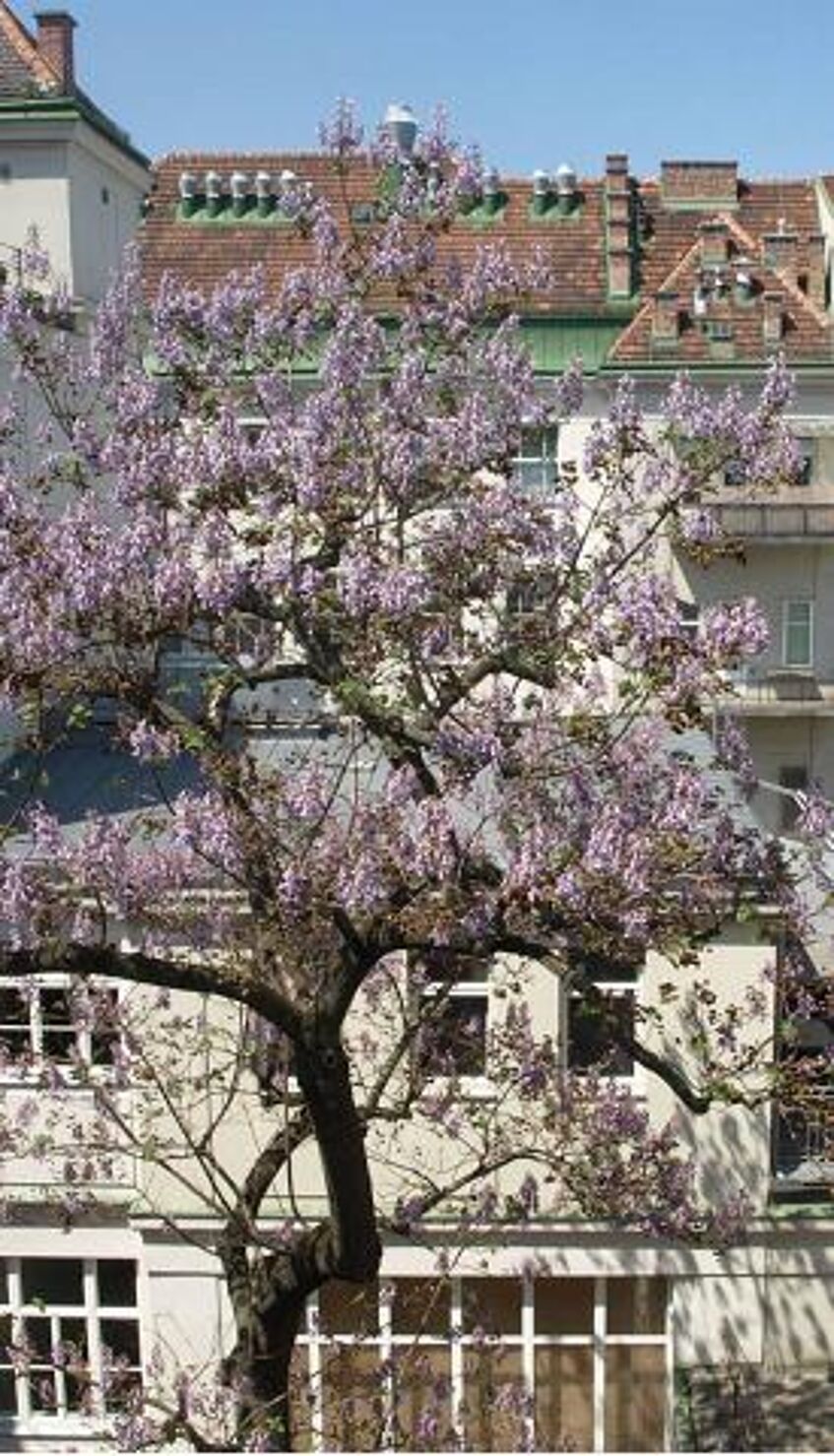
History
The Beginning
The history of modern chemistry at the University of Vienna dates back to the year 1849, when in the course of a comprehensive reform of the public education system the Chair of Chemistry was relocated from the Medical Faculty to the Philosophical Faculty. In the 19th century, the rapidly increasing importance of chemistry required the discipline to shift its focus from an exclusively medical context to a wider range of research areas in order to satisfy the demands of the industrial age.
However, for the next two decades conditions were less than ideal. Acutely underfinanced, without its own building or sufficient laboratories, the First Chemical Institute was forced to make do with temporary solutions that increasingly failed to meet the needs of a growing number of students. Only in 1868 the construction of a new, separate building was approved, and in 1872 the First Chemical Institute together with the newly founded Second Chemical Institute could finally move into the building Währinger Straße 10. From 1871 to 1909, there also existed an additional third Chair of Chemistry and Chemical Institute in the building of the Handelsakademie on Karlsplatz.
At the time, the main emphasis of research of the Chemical Institutes at the University of Vienna was on Organic Chemistry, especially Natural Product Chemistry, whereas problems of Inorganic, Physical and Analytical Chemistry were predominantly investigated at the Geologische Reichsanstalt and Polytechnical Institute. Thus, when Josef Loschmidt was appointed professor in 1872, it was as Professor of Physics with special emphasis on Physical Chemistry, rather than Chemistry. However, under the influence of his lectures on physical-chemical topics, the focus soon began to shift towards physical chemistry. One of the most renowned scientists in those days was Carl Auer von Welsbach, a pioneer in the field of Inorganic Chemistry. A native of Vienna, he returned to the city after having obtained his doctorate at the University of Heidelberg. In the course of his studies, he invented the gas mantle, ferrocerium ("Auermetall", used as the ignition source for lighters) and the osmium-lamp, predecessor of the tungsten lamp. He also discovered the rare-earth elements Praseodym, Neodym, Ytterbium and Lutetium.
A New Building
With the field of chemistry rapidly developing, the new building Währinger Straße 10 soon also proved too small. After long discussions and delays, 1910 marked the beginning of the building activity at the site Währinger Straße - Boltzmanngasse - Strudlhofgasse, where major parts of the Faculties of Chemistry and Physics are still located today. 1915 the buildings for the First and Second Chemical Institutes were finished, but the First World War further delayed interior installation and fitting work. It was only in 1924 that all the departments of the Institutes of Chemistry were finally able to relocate to the new building.
A New Organisation
Since their foundation, the Chemical Institutes had a parallel structure with a department for Analytical, Inorganic and Organic Chemistry existing in each Institute; Physical Chemistry was only taught at the First Chemical Institute. In a commission meeting in 1957 the idea was put forward to modernise and unify this system following the model of most domestic and foreign universities. The reorganization took place in several stages during the following years. In 1959 the designations First and Second Chemical Institute were abandoned and three new institutes were established in their place: the Analytical Institute, the Organic Chemistry Institute and the Inorganic and Physical Chemistry Institute. In 1960 the latter was divided into the Institute for Physical Chemistry and the Institute for Inorganic Chemistry.
Institute of Inorganic Chemistry
The first head of the Institute, Alfred Brukl (1960-1965) put the main emphasis on the chemistry of rare earth elements, following the tradition of Auer von Welsbach. During the following years, successful inorganic-preparative research work developed, resulting in the discovery of numerous novel compounds and substance classes – specifically the spontaneously combusting rare earth chlorido-bis-boranates, the up to then unknown trisboranates and the water free rare earth cyanides. Many scientific papers were also devoted to the extremely labour-intensive area of rare earth separation and ultrapurification.
When Kurt Komarek became head of the Institute in 1966, he changed the direction of research. Solid-state chemistry and the chemistry of liquid alloys now became the major areas of research. From this research work, today's area of Materials Chemistry developed. In the late 1960s, during the period of Thomas Schönfeld as head of the institute, Radiochemistry – a field of increasing significance for Environmental Chemistry – was developed as an additional research area.
Bernhard Keppler, current head of the Institute, was appointed to the Chair of Inorganic Chemistry in 1995 and head of the Institute in 1996; he established Bioinorganic Chemistry as a new field of research. In 1998, Herbert Ipser was appointed to the second full professorship at the Institute for the area of Materials Chemistry. At the end of 2004, the Institute was once more divided into two separate units, with Bernhard Keppler as head of the Institute of Inorganic Chemistry and Herbert Ipser becoming head of the newly established Institute of Inorganic Chemistry – Materials Chemistry (today: Inorganic Chemistry – Functional Materials). Main research areas of the Institute of Inorganic Chemistry currently are selected parts of Bioinorganic Chemistry, Medicinal Chemistry, Environmental- and Radiochemistry, Synthetic Chemistry, Analytical Chemistry, Bioanalytics and Cell Biology and first and foremost the development of new antitumor therapeutics and substances for diagnosis.
Literature:
Robert W. Rosner, Chemie in Österreich 1740 - 1914: Lehre, Forschung, Industrie (Böhlau, 2004)
Mathias Luger, Die Entwicklung der chemischen Institute im 20. Jahrhundert (Diploma thesis, University of Vienna, 2011)
For the history of the Faculty of Chemistry 1938 - 1945 see:
Gedenkwand der Fakultät für Chemie
Wolfgang L. Reiter, Aufbruch und Zerstörung. Zur Geschichte der Naturwissenschaften in Österreich 1850-1950 (LIT Verlag, 2017)
